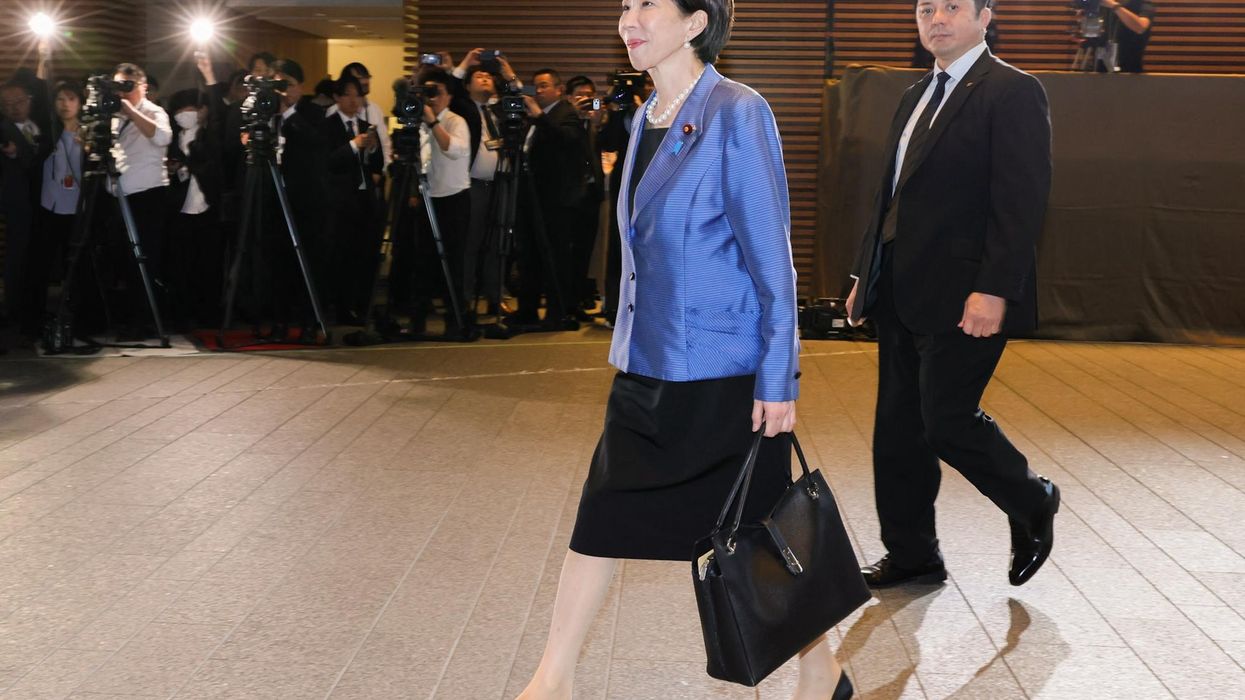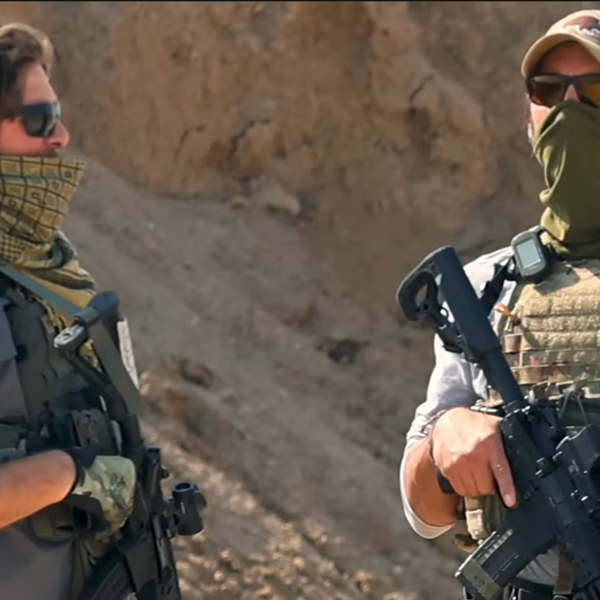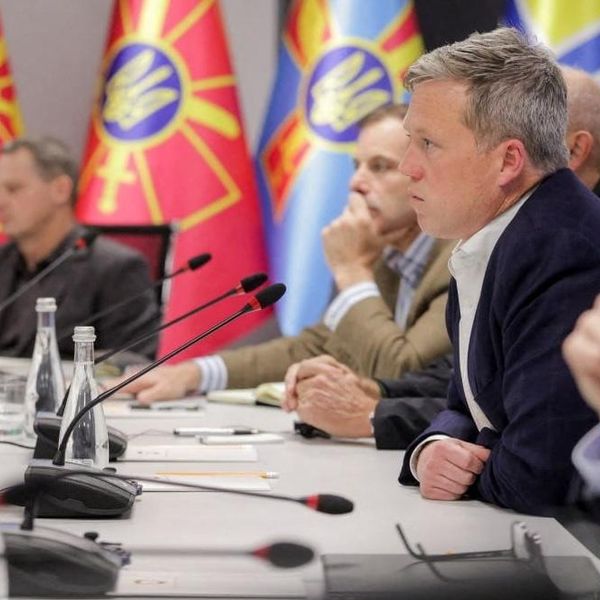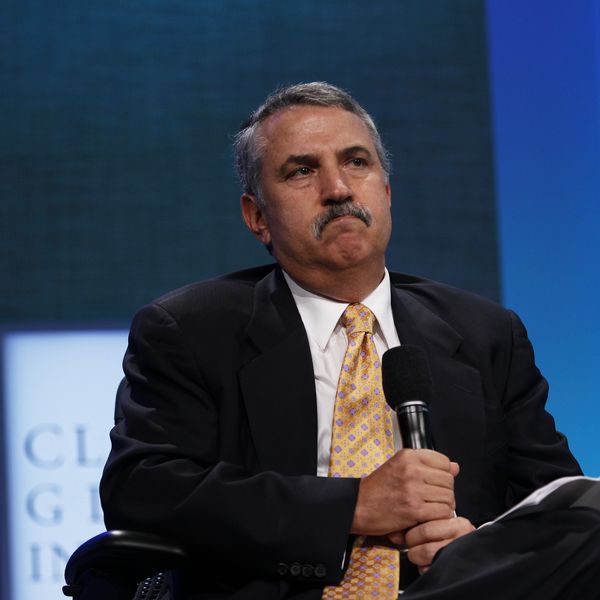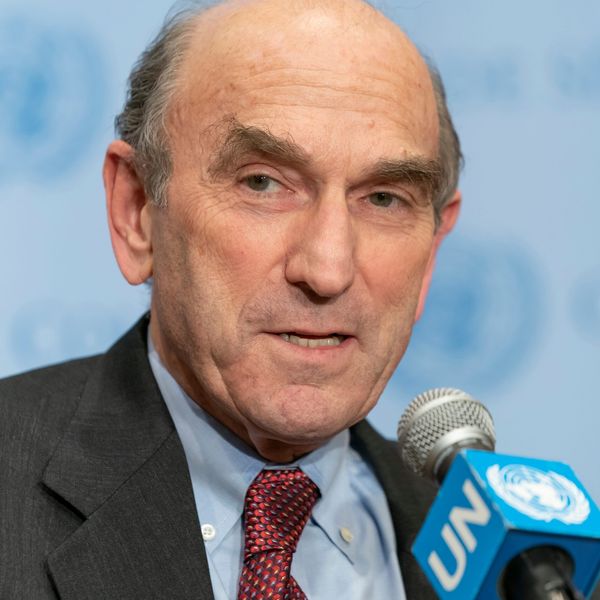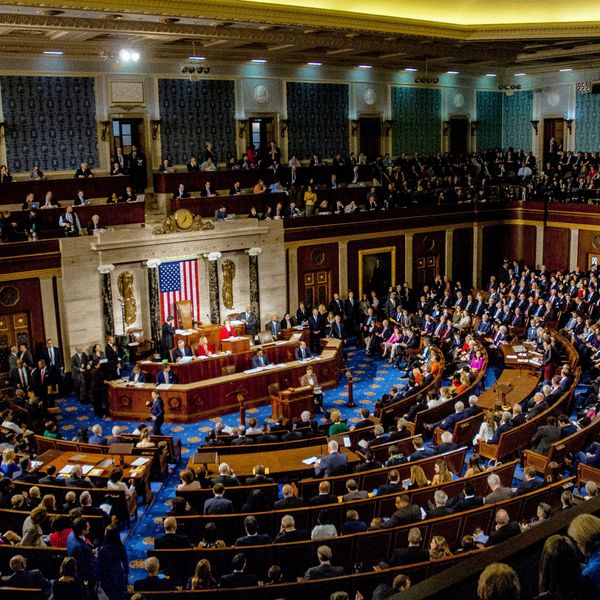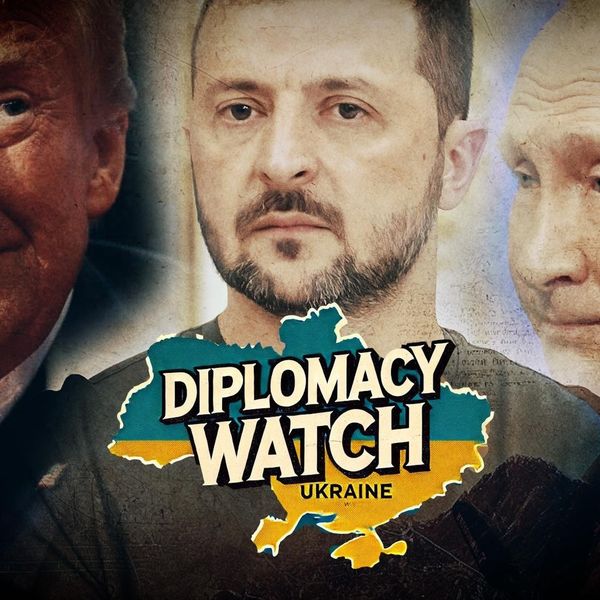Killing the al-Quds Force commander Qassem Soleimani on January 3 was an unprecedented measure by the United States in its four decades of confrontation with Iran. This assertive approach has enforced a much-needed deterrence of Iran and altered the narrative about a waning American influence. At the same time, it has also antagonized Tehran even if the Iranian regime appears to be standing down for now. The post-Soleimani Middle East offers both challenges and opportunities; however, the Trump Administration does not seem to have a strategy to either mitigate or exploit them.
Soleimani was the architect of Iranian expansion in the Levant and the key figure in Tehran who, since last summer, inspired the sporadic attacks against Gulf allies of Washington and most recently against US assets in Iraq. The White House’s decision to withdraw from the nuclear deal with Iran and impose crippling sanctions, most notably zeroing Iran’s oil exports, has pushed Tehran to the edge. While the Trump Administration has failed to arm-wrestle Tehran to renegotiate the Joint Comprehensive Plan of Action (JCPOA), the Iranian regime has been unable to increase the regional cost of these sanctions on US interests in the Middle East. The killing of Soleimani and the firing of Iranian ballistic missiles on military bases housing American forces in Iraq did not alter the existing dynamics between Washington and Tehran: neither country is ready for war or for negotiation.
Moreover, President Donald Trump was not merely driven by domestic politics in ordering Soleimani’s elimination. This operation apparently had been planned since at least June 2019 (with other reports tracing it back to spring 2017), and it seems to have been part of a larger campaign by the Trump Administration which reportedly included targeting but missing the Quds Force commander in Yemen, Abdul Reza Shahlai. However, these plans seem to have been intensified in the past weeks after rockets hit a military base in Kirkuk and killed an American contractor, which triggered a sequence of violence with US airstrikes on Kataeb Hezbollah (an Iran-backed group in Iraq), the storming of the US embassy in Baghdad, and ultimately the killing of Soleimani. In recent months, the Trump Administration has moved past the question of how to deter Iran without being dragged to a war. CIA director Gina Haspel had reportedly advised Trump to approve the killing of Soleimani and predicted a subdued Iranian reaction. There is also an unprecedented synergy in Trump’s national security team with Secretary of State Mike Pompeo, Defense Secretary Mark Esper, and White House National Security Advisor Robert O’Brien playing a crucial role in the decision-making process to confront Iran, all with the blessing of Vice President Mike Pence.
President Trump has won this round against the Iranian regime with minimal impact, so far, on US foreign policy and maximum benefits for him in American domestic politics. The debate in Congress on whether the Trump Administration has exaggerated the intelligence on what Soleimani was planning might fizzle if Iran’s retaliation efforts remains limited. The White House has managed—temporarily, at least—to restore deterrence with the Iranian regime, but that is just the tip of the iceberg. More should be expected in the post-Soleimani Middle East.
Iranian Retaliation: The “Resistance Front”
The killing of Soleimani, Tehran’s clumsy handling of the accidental shoot-down of a Ukrainian commercial airliner, and the ongoing protests inside Iran make the regime in Tehran more vulnerable––and potentially more dangerous––than ever. There is a discussion underway between the Iranian regime and its proxies about how best to react to the killing of Soleimani as a consensus seems to have emerged on the general idea of driving US forces out of the region.
In his press conference on January 9, the Air Force commander of the Islamic Revolutionary Guard Corps, Brigadier General Amir Ali Hajizadeh, said that after targeting Iraqi military bases housing US soldiers, the next phase of retaliation will be undertaken by what he called “the resistance front.” The optics of the message were important and telling, with the flags of Iran-backed armed movements in the background next to the Iranian flag. The regime in Tehran is plainly in crisis mode and is expecting allies to rally around—even if these allies might have few options.
Hezbollah Secretary General Hassan Nasrallah delivered two speeches since the killing of Soleimani. The first was on January 5, when he asserted that there is now a new phase with a focus on driving US forces out of the region. He said the way to accelerate this goal is to attack US military positions (rather than civilians). In his second speech, on January 12, Nasrallah took this matter further by urging that “it is time for the axis of resistance to start working” on this objective.
Indeed, this conversation started as Iranian officials continued Soleimani’s role of keeping Iraqi armed groups on the same wavelength and managing the unpredictable Shia leader Muqtada al-Sadr. A meeting was arranged in the Iranian city of Qom on January 13 between Sadr, al-Nujaba movement leader Akram al-Kaabi, and the secretary general of Kataeb Sayyid al-Shuhada, Abu Alaa al-Walai, to discuss the presence of US forces in Iraq and efforts to form the new Iraqi government.
Iran is trying to rearrange its main influence in Iraq, the Popular Mobilization Units (PMUs), known as al-Hashd al-Shaabi, by appointing a successor to the deputy chief of the Popular Mobilizing Committee, Abu Mahdi al-Muhandis, who was killed along with Soleimani. The Iraqi military announced that the leader of the “Fatah Alliance,” Hadi al-Amiri, has been appointed as the successor of Muhandis. Most importantly, Iran wants Sadr to be involved in driving American forces out of Iraq, though the latter wants this effort to focus solely on political pressure and not military attacks. On January 8, he posted a statement on Twitter asserting that the “crisis is over,” in reference to the killing of Soleimani and Iran’s retaliation, both on Iraqi territory.
Syria’s national security chief, Major General Ali Mamlouk, visited Iran on January 5 to offer condolences on the death of Soleimani. Then the Syrian regime sent a high-level delegation to Tehran on January 12, which came after Russian President Vladimir Putin’s visit to Syria on January 7 to make sure the Syrian regime would not drift toward Tehran and that Syria would not become an arena for US-Iranian confrontation after the killing of Soleimani.
Given the looming financial crisis and economic collapse in Lebanon, Nasrallah might be hesitant to involve Lebanon as a battleground for avenging Soleimani, most notably considering the growing frustration among Hezbollah constituents since the Lebanese protests began in October 2019. Russia and Turkey will also limit any Iranian retaliation in a complicated area like northeastern Syria, and Iran-backed armed groups in Syria are not well established to lead such an effort alone. For now, Iraq seems to provide the battleground for the United States and Iran; however, there are limitations they must observe so as not to push the country to the brink, given that Iraqi protesters are demanding better governance. Iran-backed groups might increase political pressure in Iraq and Lebanon by having veteran politicians in the new cabinet in addition to new technocratic names to appease the demands of the protesters. At the same time, a political impasse might prevail in Lebanon, Syria, Iraq, and Yemen.
US Strategy Post-Soleimani
The Trump Administration has clearly moved beyond sanctions and the “maximum pressure” approach toward Iran. It is ready, if needed, to go on the offensive with the Iranian regime, militarily and diplomatically, and this carries risks for all parties involved. Hence, there are immediate implications for the US approach in the Middle East.
The killing of Soleimani shows the extent to which US intelligence is able to track the moves and communications of Iranian officials. According to The New York Times, before the assassination, messages were intercepted in which Iran’s Supreme Leader Ali Khamenei asked Soleimani to return to Tehran for consultations. This intelligence war will most likely be intensified between the two sides moving forward.
Another immediate impact is that the focus on the so-called Islamic State (IS) will decrease as attention shifts to protecting American troops from the Iranian regime and its proxies. The US-led coalition halted the operations in Iraq and Syria on January 5, two days after the killing of Soleimani, hence the remnants of IS might benefit in one way or another from the US-Iran confrontation. Another consequence of Soleimani’s killing is that the Trump Administration will once again have to delay shifting resources from the Middle East to deter Russia and China. There are currently around 54,500 American soldiers deployed in the Middle East and the killing of Soleimani puts them on alert for the foreseeable future. Indeed, Trump has been open about the idea of withdrawing, or at least redeploying, US forces in the region.
The complications in Middle East conflicts predate the killing of Soleimani; the protests in Lebanon and Iraq have raged since last October while there is no horizon for a political solution in Syria, Yemen, and Libya. The big question is how the Trump Administration will translate into policy or exploit this new deterrence balance with Iran, without offering an explicit strategy. The White House has now returned to using sanctions as a primary tool by threatening to take punitive measures against the Iraqi government if it insists on driving US forces out of Iraq.
Trump has opened the door wide for a new phase of political pressure on US influence in Iraq—and perhaps Lebanon at some point—without an articulated game plan beyond imposing sanctions. There are open questions whether the United States will lose Iraq in the long term as a result of killing Soleimani. While this remains unclear for now, the Trump Administration is at the very least deepening the sectarian divide in Iraqi politics and helping the Iranian regime to distract from the demands of Iraqi protesters.
The Trump Administration will use Congress’ Caesar Act to pressure Russia on Iranian influence in Syria; but no breakthrough should be expected on the political front, given that there is no credible US-Russian engagement nor a high-level US commitment to advance the political process in Syria. All parties concerned might be more interested in maintaining the status quo in northeastern Syria, in light of the dynamics there. The Trump Administration might pressure Gulf allies that are considering to financially and economically engage the Syrian regime, a move that would be met with Russian reservations. Moreover, US allies in Lebanon, Iraq, and Syria are weaker and have little to offer and, most importantly, they might not trust that Washington would help them in case they lead the confrontation against pro-Iran leaders and politicians, given that the Trump Administration did not protect Gulf allies last year and partially gave up on Kurdish allies in Syria.
New Dynamics in the US-Iran Conflict
There are three options ahead for the United States: war, negotiation, or a long-running battle of attrition. US forces remain in a defensive posture until they are ordered to do otherwise by the White House. However, the Trump Administration seems to be alone in any scenario that materializes ahead. Both European and Gulf allies are distancing themselves from Washington as a result of escalating tensions with Iran. European leaders blame Trump for withdrawing from the nuclear deal without offering an alternative, and Gulf leaders do not want to serve as the battlefield of this US-Iranian confrontation nor to encounter additional Houthi attacks. While this European and Gulf neutrality restrains the American diplomatic effort, it also limits Tehran’s ability to retaliate in the Gulf. Iraqi Prime Minister Adel Abdul-Mahdi told the Iraqi parliament on January 6 that upon arriving in Baghdad, Soleimani was carrying the Iranian response to the Saudi message of de-escalation. Iran might want to maintain this détente with Gulf leaders.
It will be hard for both sides to return to the time of the pre-Soleimani killing as mistrust is increasing; however, Washington and Tehran remain committed to back channel messages to avoid serious miscalculations since direct communications between them had halted since Trump came into office in 2017. Nevertheless, this back channel would most likely not lead to a breakthrough in any nuclear talks.
The fundamental challenge is that both sides have their own domestic environment that might prevent such a breakthrough. Trump confronts an impeachment trial and a US presidential election year. For his part, Khamenei faces mounting pressure at home so giving in to the United States after the killing of Soleimani would be perceived as a sign of weakness. The current dynamics of no war and no negotiation might last until the elections in November, but it remains unclear to what extent Washington and Tehran would be willing to keep their proxy confrontation contained, most notably in Iraq and Lebanon. While direct talks are improbable in the foreseeable future, they are inevitable when the time is right, and the latest round of confrontation might then be a factor in facilitating such a breakthrough.
It is not apparent whether Trump and Khamenei understood the implications of altering the US-Iran rules of engagement. Khamenei’s bet was that Trump would never retaliate by taking such a radical move so now the regime’s policy of confrontation has reached a dead end. The killing of Soleimani runs against Trump’s basic instincts of rejecting endless wars in the Middle East and predisposes the president to relegate this ticking bomb to his successor—or his own second term. To be sure, Trump is thinking short-term on Iran with no clear long-term objectives in the Middle East.
It is not a surprise that the Iranian regime did not retaliate forcefully. Such restraint was also exhibited after the CIA-Mossad joint operation that killed Hezbollah commander Imad Mughniyeh in Syria in February 2008. The Iranian regime prefers the long game confrontation instead of a classical war; however, there are limited options to strike back beyond Iraq and potentially Afghanistan, where US troops are most vulnerable. How the Iranian regime might or might not retaliate could define Trump’s legacy in the Middle East.
This article was republished with permission from Arab Center Washington DC.


